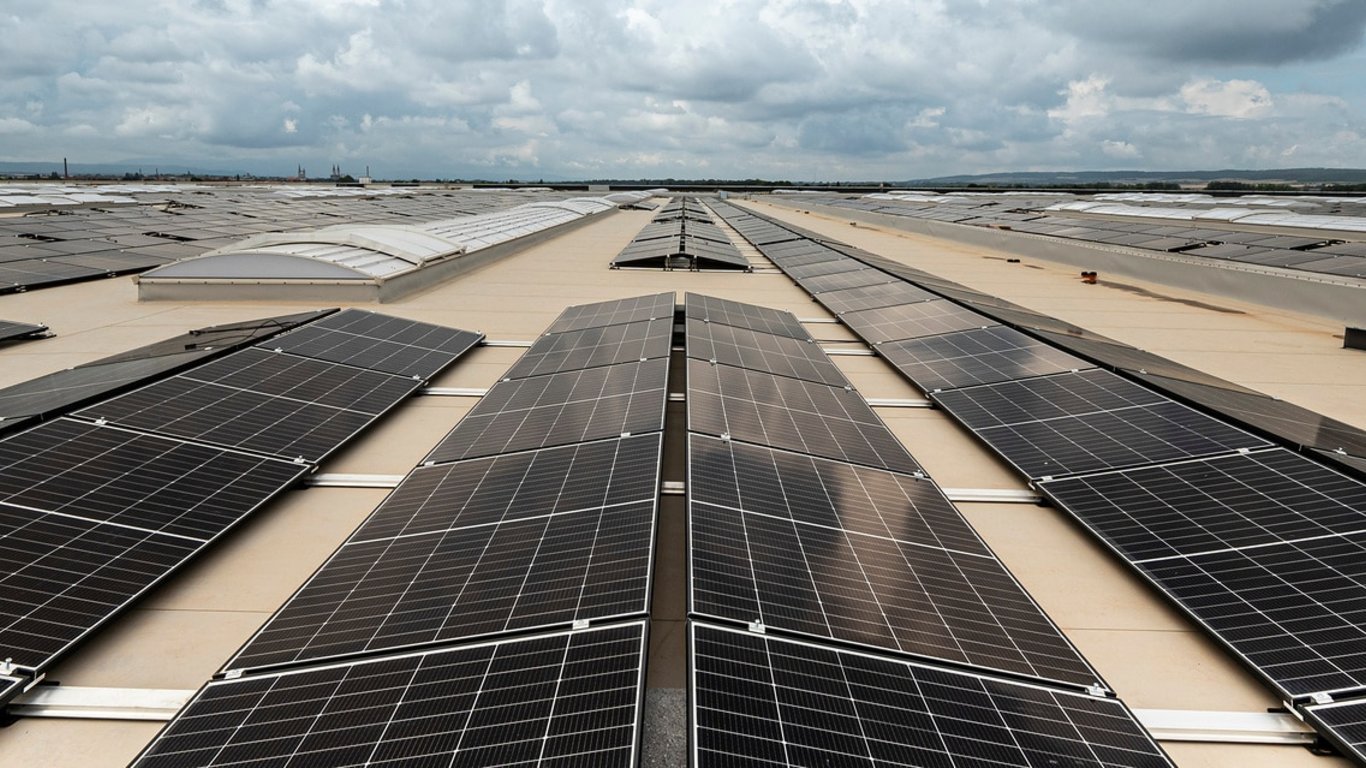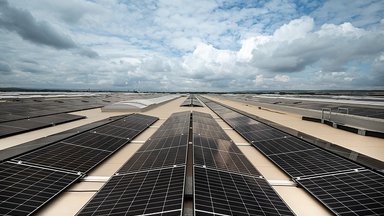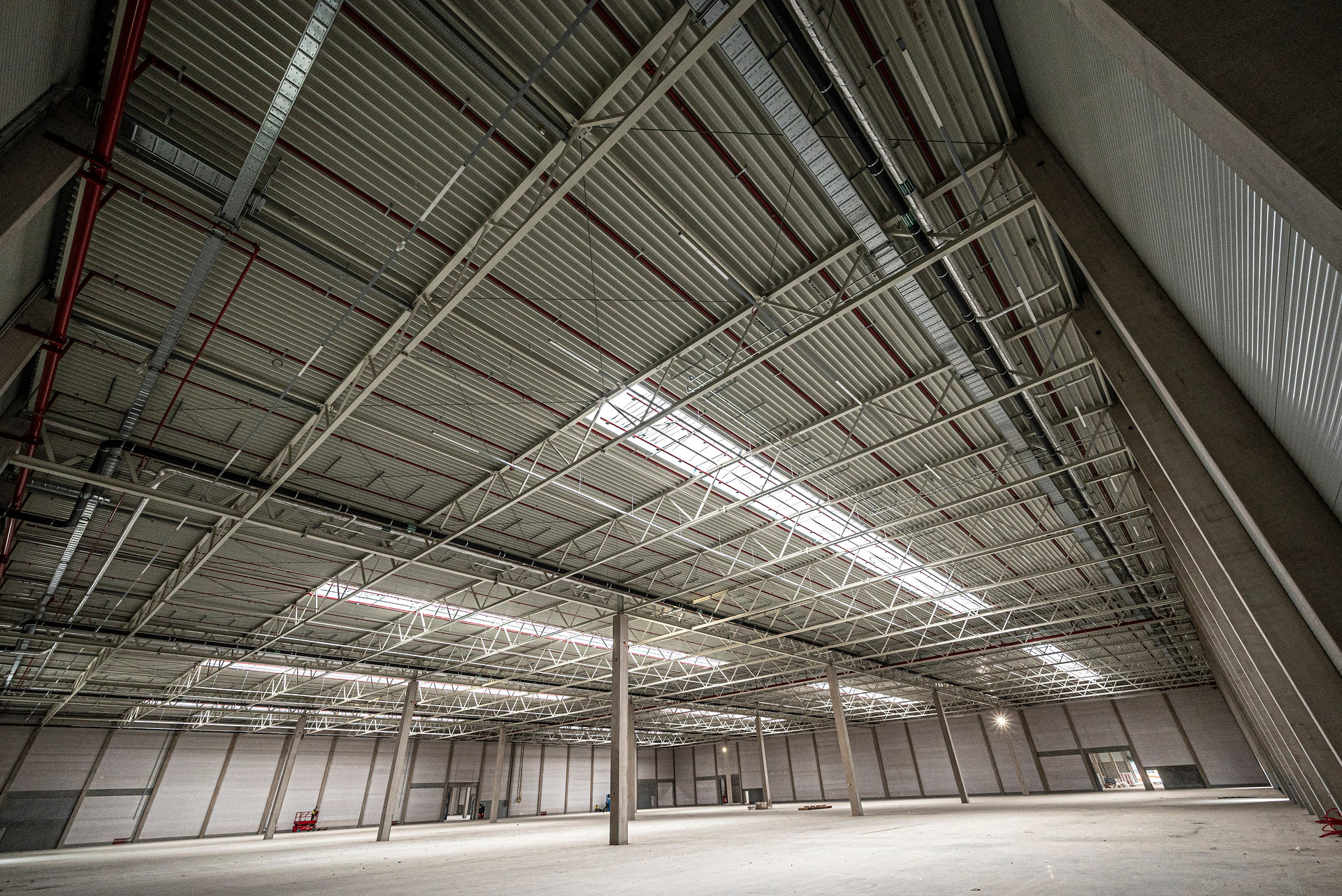
Daimler Truck Global Parts Center Halberstadt: Construction progress takes clear shape
Download

Daimler Truck Global Parts Center Halberstadt: Construction progress takes clear shape
Daimler Truck's new logistics site will gradually take over the global supply of spare parts for Mercedes-Benz trucks from 2025 Global Parts Center planned for CO₂-neutral operation from the outset - energy concept completely dispenses with fossil fuels One of the largest rooftop photovoltaic systems in Europe, to the company's knowledge, is to generate significantly more electricity than required at the site in future …
- Daimler Truck's new logistics site will gradually take over the global supply of spare parts for Mercedes-Benz trucks from 2025
- Global Parts Center planned for CO₂-neutral operation from the outset - energy concept completely dispenses with fossil fuels
- One of the largest rooftop photovoltaic systems in Europe, to the company's knowledge, is to generate significantly more electricity than required at the site in future
Leinfelden-Echterdingen/Halberstadt - Daimler Truck's new logistics site, the Global Parts Center (GPC) in Halberstadt, Saxony-Anhalt, will gradually take over the worldwide supply of spare parts for Mercedes-Benz trucks from 2025. In the ten months since the official laying of the foundation stone, the site on the approximately 900,000 square meter plot has grown at a rapid pace.
The new building will have a gross built-up area of around 270,000 square meters and will serve around 20 regional logistics centers worldwide in a three-stage logistics process - for example in various European countries, Turkey, the United Arab Emirates, Brazil and China. These in turn will supply the regional dealers with the parts. Halberstadt thus becomes the heart of the global spare parts supply for Mercedes-Benz trucks.
Stefan Rödler, Head of Daimler Truck Real Estate: “Thanks to the excellent cooperation with the city, district and state, our Global Parts Center has already taken on an impressive shape less than a year after the foundation stone was laid. We are therefore well on schedule."
Rödler continues: “The new logistics site has been planned for CO₂-neutral operation from the outset, and the energy concept completely dispenses with fossil fuels. The roofs of the logistics buildings, and therefore more than 90 percent of all roof surfaces at the site, are currently being fitted with photovoltaic modules. As far as we know, this will be one of the largest rooftop photovoltaic systems in Europe."
Currently under construction: the photovoltaic system
If you drive past the Global Parts Center on the main road, you can already see two large, parallel halls, each around 200 meters wide and 600 meters long - one for inbound goods, one for outbound goods - and a few smaller buildings such as the recycling halls or the office building.
What cannot be seen from street level: The hall roofs are currently being fitted with photovoltaic modules over a large area. At around 30,000 square meters, around twelve percent of the total roof area of around 250,000 square meters is already covered with PV modules. The roofs of the outbuildings on which no PV modules are installed are greened.
The so-called rooftop photovoltaic system with a good 22 MWp is expected to generate more than 20 million kWh of electricity per year in future. That is significantly more than will be consumed at the site. Surplus energy from the Global Parts Center will be fed into the grid. Additional energy storage is planned to keep the level of self-sufficiency as high as possible over the period of use. In the first stage, an energy storage system of approx. 2,000 kWh is planned, which will be supplemented by a further storage system at a later date.
Sustainability at the site: the energy concept
The new logistics site has been planned for CO₂-neutral operation from the outset; the energy concept completely dispenses with fossil fuels. Neither natural gas nor crude oil is required. The site is heated using electric heat pumps, which bring the heat into the building via floor heating systems. Due to the low heating water temperatures and the storage effect of the industrial floors, a high level of energy efficiency is achieved.
Around 30 charging points for electric vehicles will be provided to make it easier for employees to access electric mobility. The infrastructure is already being prepared for the further, future expansion of the charging infrastructure.
There will also be appropriate charging facilities for the suppliers' trucks, whose fleets will gradually be electrified: 16 charging points with 200 kW charging power and four charging points with 400 kW charging power are planned.
The current construction progress in figures
Incoming and outgoing goods halls, recycling halls and service buildings: these central buildings for logistics operations are supported by around 1,600 reinforced concrete columns.
At around 90,000 square meters, or more than twelve soccer pitches, around a third of the hall floor has already been concreted. More than half of the hall façade has already been completed; the 30,000 square meters currently installed correspond to around four soccer pitches. Inside, almost three kilometers of fire protection walls have already been built, with a further 500 meters to be added in the coming weeks.
The roof construction figures are also impressive: over 31 kilometers of steel roof girders have already been installed. At around 200,000 square meters, the trapezoidal roof sheets installed so far have the combined area of almost 30 soccer pitches.
Not yet visible: the high-bay warehouse will grow in height over the coming months. To this end, the ground has been prepared for the building with almost 3,000 bored piles.
Article assets

Daimler Truck Global Parts Center Halberstadt: Construction progress takes clear shape

Daimler Truck Global Parts Center Halberstadt: Construction progress takes clear shape

Daimler Truck Global Parts Center Halberstadt: Construction progress takes clear shape

Daimler Truck Global Parts Center Halberstadt: Construction progress takes clear shape

Daimler Truck Global Parts Center Halberstadt: Construction progress takes clear shape

Daimler Truck Global Parts Center Halberstadt: Construction progress takes clear shape

Daimler Truck Global Parts Center Halberstadt: Construction progress takes clear shape

Daimler Truck Global Parts Center Halberstadt: Construction progress takes clear shape

Arnd Minne
Spokesperson Corporate Communications Mercedes-Benz Trucks & Daimler Buses
arnd.minne@daimlertruck.com
+49 176 30912514










